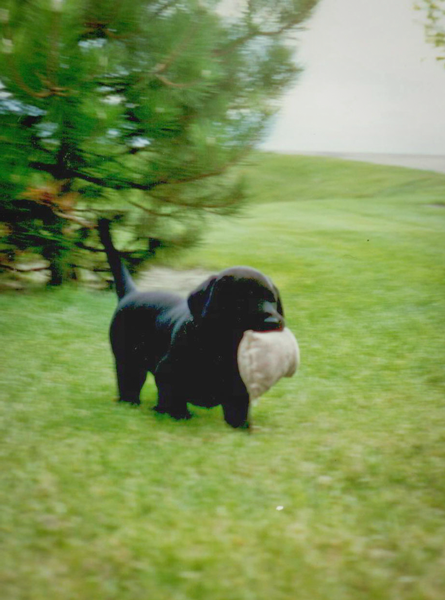Repetition is the key ingredient at this early stage
Keep it simple. That’s my philosophy when it comes to teaching a dog the basics.
The most important aspect of training a dog, whether a pup or 1-or-2-year-old, is putting them through lessons of repetition and gradually making the task more difficult.
The problem most beginners have is that they’re a good friend and mother, but not very good teachers. A common error that most people make is they don’t show the dog what they want them to do.
There is a natural method to teaching a dog, and it starts with praise. In the first step, I recommend incorporating praise with the new command.
Through repetition, the dog understands what it’s out there for, whether it’s retrieving or quartering.
Then you stop using praise, the dog will realize doing the work is his reward.
Make sure dog understands
Discipline shouldn’t be incorporated into the equation until a dog understands what he’s doing.
We all know how to give praise and probably give too much of it. In handling, you’ve got to realize that reprimand is a training tool, but do not let it get out of hand. Don’t lose your temper.
And don’t use food to get a dog to do what it’s supposed to do; use praise by voice and touch. Food is a good training mechanism for trick dogs. A retriever or gun dog should not work for food or praise. Our end objective is that a dog’s reward is the field work.
Watch tone of voice
When teaching young dogs the basics, handlers should use a commanding tone of voice, but not a shouting voice, which might frighten the dog. In times of play, a lighter tone can be used.
One weakness that I see most handlers make is that when they talk to their dogs, they put in extra words.
Some dog owners will say ‘come on over here and sit down’, that can be confusing, since what you’re really doing is combining three commands—come, heel, and sit. From experience, one word commands work best.
When teaching basic commands such as come, many people forget to do the field work. Don’t just make him come when he’s in the yard. Make him come in a stubble field, in a CRP corn field. It’s good to do the field work with trained dogs, too, just to keep them honest.
Never too old
A dog is never too old to learn. As a trainer, there is an advantage in training a little older dog—8 months to 1 year old.
When they’re older and mature and show trainability, they can pick it up faster. It may take a young pup two to three weeks to learn a basic command, while an older dog can pick it up in just a or two days.
I start play training my dogs at 7 to 12 weeks. Then I go to town. Within 12 weeks, a dog is an adult, brain-wise.
By 6 months, the pup should be retrieving singles and understand the basic commands of sit, stay, heel, come and quartering.
It’s that simple. You need to understand these basics to start your training.
